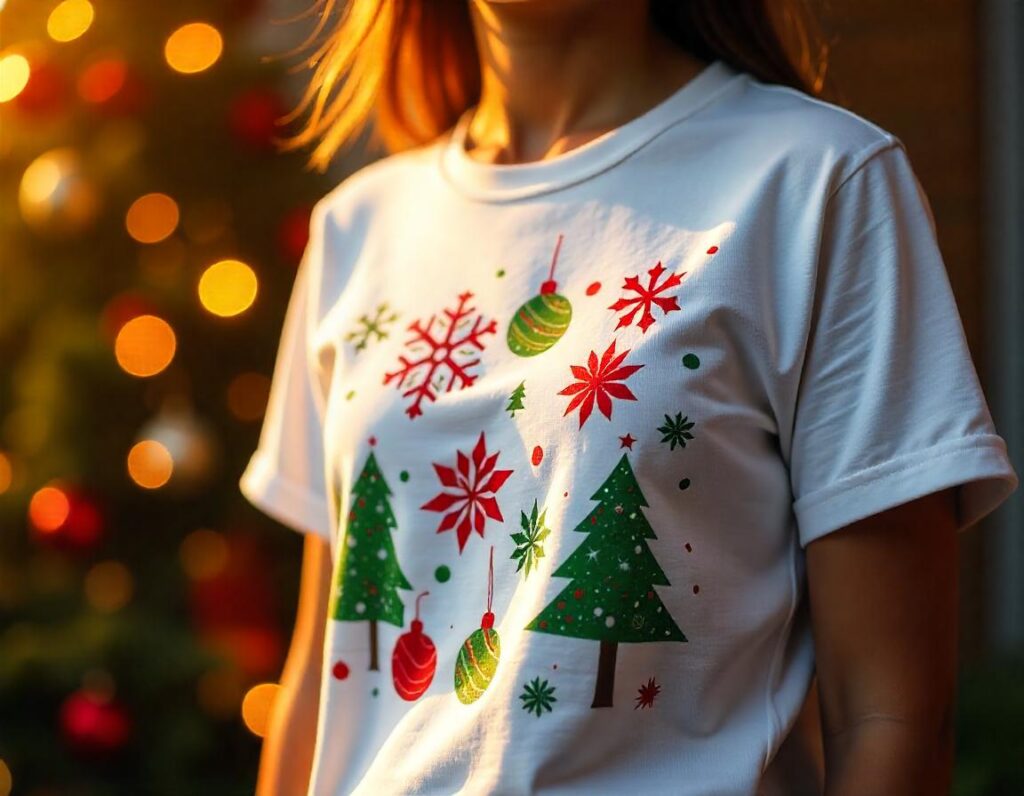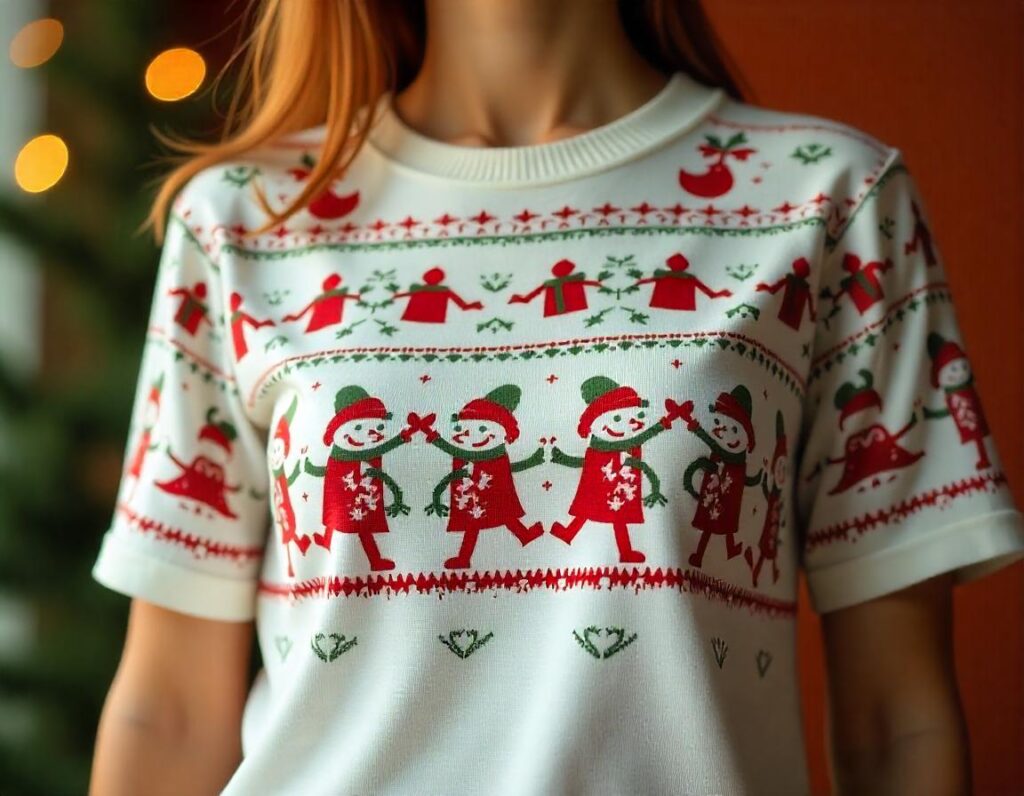DTF printing, or Direct-to-Film printing, is revolutionizing the apparel industry by combining superior quality with innovative technology. This method is quickly gaining traction, particularly when compared to traditional screen printing, due to its capabilities to produce vibrant, intricate designs with remarkable precision. As businesses increasingly prioritize sustainability in their production processes, the environmentally friendly practices associated with DTF technology are becoming a decisive factor. Improved quality of DTF prints not only satisfies customer demands for detail and vibrancy but also drives the market growth for this printing technique. With the ongoing advancements in DTF technology, it is clear that this printing method is poised to take the lead in the competitive landscape of textile printing.
When we delve into the landscape of textile decoration technologies, alternative terms like Direct-to-Film (DTF) and traditional screen printing surface as key players in this competitive arena. The art of printing on fabrics has evolved significantly, with methods such as heat transfer printing also vying for attention alongside DTF technology. Understanding the nuances of these printing methods is essential not just for industry professionals, but also for businesses aiming to deliver high-quality products while minimizing their ecological footprint. The ongoing debate between DTF and screen printing, especially regarding print quality and resource efficiency, underscores the importance of examining these advancements closely. As we explore these alternatives, we uncover the benefits that DTF holds in contrast to its predecessors.
The Basics of DTF and Screen Printing
Direct-to-Film (DTF) printing and screen printing are two leading methods utilized in the apparel industry, each boasting unique processes and outcomes. DTF printing involves transferring designs onto a special film before applying them onto fabric using heat. This technique has garnered attention for its ability to produce vibrant, intricate designs with a soft finish. Conversely, screen printing has been a reliable choice for many years, employing stencils or screens to layer inks directly onto clothing. It is especially popular for larger bulk orders, often proving to be efficient for simple designs or logos.
The choice between DTF and screen printing often depends on the specifics of the order, including volume, complexity of the designs, and material types. DTF shines in quality and detail, making it suitable for small to medium production runs where multicolored graphics are necessary. In contrast, screen printing offers high durability and is preferred when producing items with limited color choices or basic logos in substantial quantities. Understanding these fundamentals can significantly help businesses choose the right method for their needs.
Sustainability and Environmental Impact in Printing
As business practices evolve, sustainability has become a critical factor in defining the printing processes embraced by companies. DTF printing is frequently cited for its environmentally friendly profile, especially as it minimizes the amount of wasted ink due to its precise printing techniques. Unlike screen printing, which can generate considerable waste through excess ink and failed prints, DTF significantly reduces its carbon footprint by utilizing less material and producing fewer by-products. This shift towards eco-friendly practices resonates with consumers increasingly concerned about their choices’ environmental impact.
An eco-conscious approach not only strengthens a brand’s reputation but also meets customer demands for sustainable products. Adopting DTF printing exemplifies how companies can align profitability with environmental responsibility. As the sector continues to innovate, the sustainable attributes of DTF may ideally position it as the leading choice in an increasingly competitive market, particularly among environmentally aware consumers.
Quality Comparison: DTF vs. Screen Printing
When it comes to quality, DTF printing is often hailed as superior to traditional screen printing. One of the primary advantages of DTF technology is its ability to produce photorealistic designs with complex patterns and gradients that screen printing can struggle to replicate. DTF uses a unique process that allows colors to appear more vibrant and details to emerge crisply, resulting in prints that were once unimaginable with screen printing. Users enjoying a soft and breathable finish report higher satisfaction, particularly when engaging in artistic or custom projects.
On the other hand, screen printing still holds its ground for high-volume production with simpler designs. The sheer efficiency and durability of inks in screen printing can outlast those produced by DTF under certain conditions, making it a go-to for standard apparel branding. Nonetheless, with DTF’s rapid advancements and promising capabilities, many industry insiders believe that it could soon become the gold standard for high-quality apparel prints.
The Role of Technology in Advancing DTF Printing
Recent developments in DTF technology have propelled its popularity across the printing landscape. Innovations from companies like Eazydtf have resulted in superior large-format printing solutions, enhancing the speed and quality of output. These breakthroughs allow businesses to undertake larger orders with the confidence that each print will meet high-quality standards. As technological advancements continue to roll out, DTF printing’s capabilities only expand, proving it as a viable competitor against established methods.
The enhancements in DTF technology not only facilitate better quality but also contribute to a smoother workflow in the production process. Automated systems and improved printer functionalities reduce manual intervention, speeding up the turnaround times for orders. As businesses seek to satisfy growing consumer demands promptly, the efficiency offered by modern DTF solutions positions it favorably in the ongoing DTF versus screen printing debate.
Accessibility of DTF Printing for Small Businesses
The growing accessibility of DTF printing is revolutionizing the landscape for small businesses and DIY enthusiasts. With the introduction of user-friendly devices like the LOKLiK iPrinter, the barrier to entry for quality apparel printing has lowered significantly. This democratization of technology empowers individuals and smaller operations to create high-quality prints that compete with those generated by larger, established companies using screen printing techniques.
Additionally, the affordability of DTF printers and materials continues to make this method an attractive alternative. Small businesses can leverage DTF to offer unique and customized merchandise without needing substantial initial investments in traditional screen printing setups. This shift fosters creativity and innovation among new entrepreneurs, expanding the potential for personalized products in the marketplace.
Future Trends in DTF and Screen Printing
As we look to the future of apparel printing, the trend towards DTF technology seems poised to dominate market discussions. With continuous advancements in print quality, sustainability, and accessibility, DTF is attracting attention from businesses eager to modernize their printing processes. The competitive advantage of DTF over traditional methods lies in its ability to deliver exceptional quality prints with less environmental impact, aligning with the needs of today’s conscientious consumers.
Furthermore, as technology evolves, both DTF and screen printing will likely see innovations that lead to enhanced capabilities and options for businesses. Hybrid solutions that combine aspects of both methods could emerge, allowing companies to utilize the strengths of each printing technique to meet the diverse demands of their customers. Regardless of how the landscape shifts, understanding the nuances and advantages of DTF, especially in relation to screen printing, will remain crucial for businesses looking to stay ahead in a rapidly evolving market.
Frequently Asked Questions
What is DTF printing and how does it compare to screen printing?
DTF printing, or Direct-to-Film printing, transfers designs from a special film onto fabric using heat. Compared to traditional screen printing, DTF offers superior quality, especially for intricate designs, and reduces waste, making it a more sustainable option.
How does the quality of DTF prints differ from screen printing?
DTF prints are known for their vibrant colors and fine details, allowing for photorealistic designs. Unlike screen printing, which can struggle with complex images, DTF technology delivers higher-quality results, resulting in greater customer satisfaction.
What are the sustainability benefits of DTF printing over screen printing?
DTF printing is more sustainable than screen printing as it minimizes waste during the production process. By adopting DTF technology, businesses can reduce their carbon footprint and meet consumer demand for eco-friendly printing practices.
Can small businesses benefit from DTF printing technology?
Yes, DTF printing technology is increasingly accessible for small businesses and DIY enthusiasts. With devices like the LOKLiK iPrinter, it’s now easier and more affordable to create high-quality prints without needing large-scale screen printing equipment.
What recent advancements in DTF technology are shaping its market growth?
Recent investments in large-format DTF printing technology have significantly improved the speed and quality of prints. Companies like Eazydtf are leading this evolution, indicating that DTF could soon outperform screen printing in various market segments.
What should businesses consider when choosing between DTF printing and screen printing?
Businesses should consider factors like design complexity, production volume, quality requirements, and sustainability. DTF printing excels in producing detailed designs with minimal waste, making it a preferable choice for high-quality apparel printing.
| Key Aspect | Screen Printing | DTF Printing |
|---|---|---|
| Technology | Traditional method using stencils to apply ink. | Newer method using film transfer technology. |
| Sustainability | Higher waste production, less eco-friendly. | Lower waste production, environmentally friendly alternative. |
| Print Quality | Best for simple designs; struggles with intricate details. | Excels in photorealistic designs with vibrant colors and fine detail. |
| Market Accessibility | Preferred for large orders; less accessible for individuals. | More accessible with devices for DIY enthusiasts and small businesses. |
| Technological Advancements | Established method with slow tech evolution. | Rapid advancements leading to better quality and speed. |
Summary
DTF Printing is revolutionizing the world of apparel printing, emerging as a frontrunner for quality and efficiency. With its innovative use of film technology, DTF printing offers vivid, detailed designs while significantly minimizing environmental impact. As sustainability continues to be a priority for businesses, adopting DTF methods allows companies to align with eco-friendly practices and attract environmentally conscious consumers. Moreover, advancements in DTF technology make it more accessible for small businesses and DIY enthusiasts, opening the doors for creativity in apparel design. Clearly, DTF printing stands out not only for the superior quality of its prints but also for its commitment to sustainability and market accessibility, solidifying its place as a leading choice in the apparel industry.



